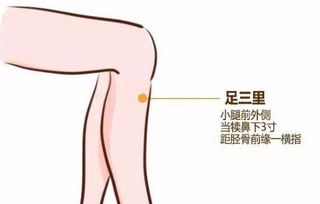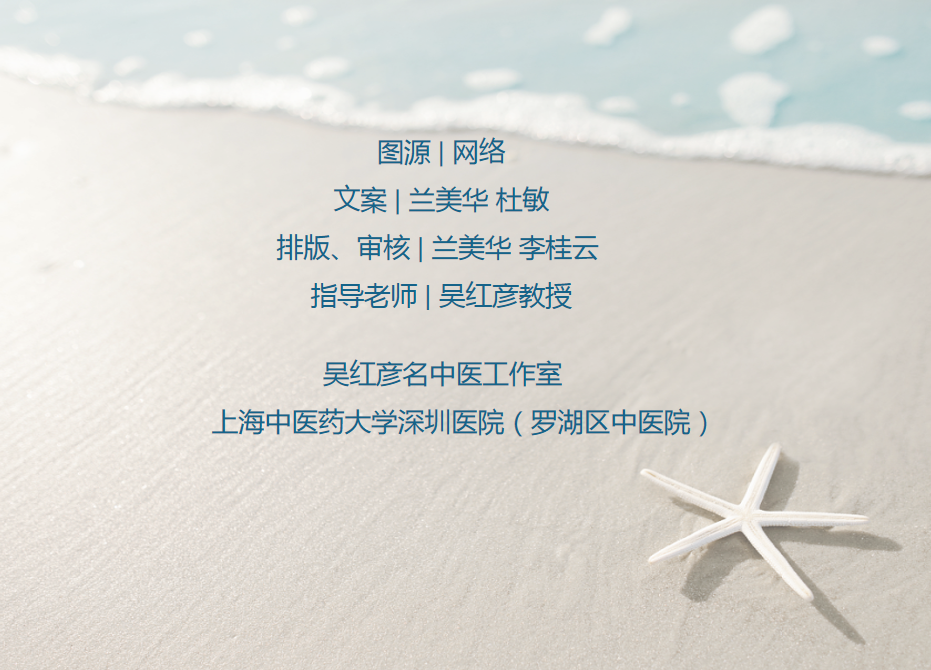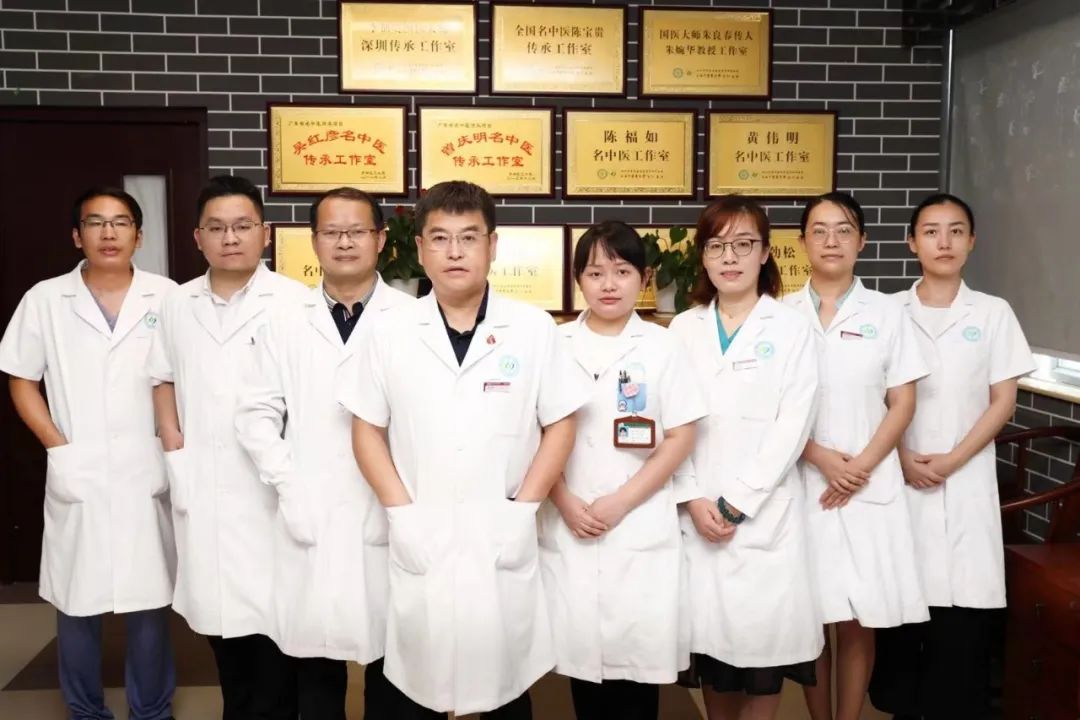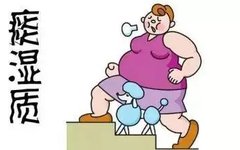1. What is Phlegm-Dampness
Phlegm-Dampness refers to pathological products caused by dysfunction of the lungs, spleen, and kidneys, leading to abnormal water metabolism in the body, characterized by both phlegm and dampness.
The so-called phlegm is a pathological product formed by the accumulation and condensation of body fluids, which is thick and sticky in texture. It can be visible phlegm that is coughed up from the lungs and stomach, or palpable phlegm that accumulates in subcutaneous muscles, mammary glands, thyroid, etc., which is commonly referred to in TCM as “visible phlegm.” The phlegm that is not visible or palpable but can be qualitatively defined as pathogenic through pathophysiological analysis is called “invisible phlegm.”
Dampness, on the other hand, does not have a distinct nature and often presents in a “gaseous state,” being diffuse and characterized by heaviness and soreness in the limbs, loose stools, and a thick tongue coating.
Phlegm-Dampness, as a pathological substance resulting from abnormal fluid metabolism, is primarily attributed to the spleen’s poor transportation, the lungs’ abnormal dispersing and descending functions, weakened kidney vaporization, and dysfunction of the San Jiao (Triple Burner) in distributing fluids. However, its relationship with the spleen is the closest. “All dampness and swelling belong to the spleen,” as the spleen governs dampness; when dampness moves, it becomes phlegm. If the spleen is deficient and fails to transport fluids, or if dampness obstructs the qi mechanism, fluids accumulate internally, leading to phlegm or dampness forming into phlegm.

2. Causes of Phlegm-Dampness
1. Dietary irregularities: Frequent overeating, excessive consumption of rich and greasy foods, and alcohol damage the spleen and stomach, preventing the distribution of the essence of food and the transformation of water and dampness, leading to internal dampness and the accumulation of phlegm.
2. Invasion of cold dampness: Humid climate, exposure to rain or water, or prolonged residence in damp areas can lead to dampness invading the body, obstructing the spleen and stomach, causing dysfunction in the transformation of water and dampness, and resulting in phlegm accumulation in the lungs.
3. Lack of exercise: Prolonged inactivity and sedentary lifestyle can hinder the circulation of qi and blood, leading to stagnation in the spleen and stomach’s transformation processes, resulting in internal dampness and phlegm accumulation.
4. Aging and chronic illness: Weakness of the spleen and stomach, reduced transformation functions, or deficiency of kidney yang can hinder the transformation of qi and water.
5. Congenital constitution: Individuals with a tendency towards stomach heat who consume excessive rich foods may have insufficient spleen function, leading to dampness and phlegm accumulation.
6. Regional influences: The southern regions of China are generally more humid, especially during the plum rain season. Prolonged residence in damp areas can obstruct the spleen’s healthy function, leading to dampness and phlegm accumulation. Additionally, the hot weather often leads to the consumption of cold foods, particularly seafood, which can be a source of phlegm.
3. Dangers of Phlegm-Dampness
Ancient practitioners believed that “all diseases arise from phlegm.” Phlegm-Dampness is a breeding ground for diseases and can easily lead to obesity, “three highs” (hypertension, hyperglycemia, hyperlipidemia), metabolic syndrome, nodules, tumors, endocrine disorders, and various other conditions.
Obesity: “Obese individuals often have phlegm-dampness, while thin individuals tend to have internal heat,” making those with phlegm-dampness prone to weight gain.
Hypertension: Phlegm-dampness obstructs the clear yang from rising and the turbid yin from descending, leading to symptoms such as nausea, dizziness, and headaches.
Hyperlipidemia: Phlegm-dampness increases blood viscosity, making hyperlipidemia more likely.
Fatty liver: Fatty liver caused by alcohol consumption, rich diets, and staying up late is often related to phlegm-dampness constitution.
Coronary heart disease: If phlegm-dampness obstructs the coronary arteries, it can hinder the heart’s yang, leading to coronary heart disease.
Cerebrovascular diseases: The sticky nature of dampness can adhere to blood vessel walls, obstructing the flow of qi and blood, leading to thrombosis and atherosclerotic plaques, which can easily trigger cerebrovascular diseases.
Diabetes: Individuals with phlegm-dampness often have spleen deficiency, leading to incomplete transformation of food and fluids, resulting in phlegm-dampness accumulation, which can eventually lead to heat and consumption of spleen yin, manifesting as diabetes, particularly type 2 diabetes, which falls under the TCM category of “Xiao Ke” (wasting-thirst).
Gout: Long-term consumption of rich foods and strong alcohol damages the spleen and stomach, leading to dysfunction in fluid transformation, resulting in phlegm-dampness accumulation, which can lead to joint inflammation characterized by redness, swelling, and pain.
Acne: Individuals with phlegm-dampness constitution often have oily skin, making them prone to acne.
Nodules, fibroids, tumors: TCM states that “dampness accumulates to form phlegm.” When yang qi is insufficient, excessive dampness that is not transformed can accumulate, forming sticky and untransformed pathogenic substances, such as polyps in the stomach and intestines, lung nodules, uterine fibroids, and visible lipomas and lymphadenopathy on the skin, which can further develop into tumors.
Menstrual irregularities: Phlegm-dampness obstructs the blood vessels, leading to delayed menstruation, reduced flow, or even amenorrhea.
Mental disorders: Phlegm can also affect a person’s mental state. If the turbid qi of phlegm-dampness obstructs normal mental activities, it can lead to symptoms such as excessive talking, melancholy, and unexplained sadness, which are indicative of depressive disorders. In TCM, this type of mental disorder caused by excessive “phlegm turbidity” is referred to as “phlegm obstructing the heart orifices.”

4. TCM Methods for Regulating Phlegm-Dampness
 1. Dietary Regulation
1. Dietary Regulation
The primary principle for health maintenance in individuals with phlegm-dampness constitution is to protect the spleen and avoid harming it. The Huangdi Neijing refers to the spleen and stomach as the “officials of granaries.” If the granaries are empty, what are the consequences? Therefore, individuals with phlegm-dampness constitution must take good care of their spleen and stomach. Those with phlegm-dampness constitution are often overweight, feel heavy and fatigued, and prefer rich and fatty foods, often consuming large quantities. In dietary therapy, it is crucial to avoid rich and fatty foods, abstain from alcohol, and especially avoid overeating and eating too quickly. The diet should be light, with appropriate consumption of ginger. It is advisable to limit sour, cold, greasy, and astringent foods, particularly sour foods. Increasing the intake of vegetables and fruits, especially those that strengthen the spleen, eliminate dampness, and resolve phlegm, is highly recommended.
Foods suitable for individuals with phlegm-dampness constitution include mustard greens, leeks, turnips, Chinese toon, chili peppers, garlic, scallions, ginger, papaya, white radish, water chestnuts, seaweed, onions, ginkgo nuts, jujubes, lentils, fava beans, cabbage, Chinese yam, coix seeds, winter melon seeds, beef, chicken, hairtail fish, loach, yellow eel, apricots, lychees, lemons, cherries, and bayberries. Salt intake should be limited, and it is not advisable to consume excessive rich, greasy, sour, or astringent foods, such as maltose, pomegranates, grapefruit, loquats, and sugar. Additionally, almond cream, lotus root powder, and poria cakes are good dietary supplements for this constitution.
The key seasons for health maintenance in individuals with phlegm-dampness constitution are summer and winter, aimed at reducing phlegm-dampness and controlling weight. In summer, it is advisable to minimize the use of air conditioning, reduce the intake of frozen foods, consume more ginger, wear cotton, linen, or silk, and get adequate sunlight. Particularly, “treating winter diseases in summer” can be implemented using herbal point applications, dietary therapy, or medicinal regulation. Individuals with phlegm-dampness constitution should avoid excessive supplementation in autumn and winter; most nourishing meats, bones, seafood, animal organs, ginseng, deer antler, donkey-hide gelatin, jujubes, fermented rice, cooked rehmannia, autumn pear syrup, slow-cooked soups, walnuts, and sesame are generally unsuitable unless there are clear symptoms of qi deficiency or yang deficiency. Foods that are sweet, bland, and mildly tonifying, such as Chinese yam, water chestnuts, coix seeds, lotus root, codonopsis, and white lentils, are good choices.
 2. Exercise Regulation
2. Exercise Regulation
Exercise is the most “cost-effective” and “harmless” method to eliminate phlegm-dampness from the body. Individuals with phlegm-dampness constitution are often overweight, and exercise can promote the smooth flow of qi, benefiting the movement and metabolism of body fluids, improving constitution and enhancing health. Generally, moderate-intensity exercises are recommended; if choosing low-intensity activities, the duration of exercise should be extended to ensure sufficient exercise volume for weight loss effects. Activities such as hiking, jogging, cycling, table tennis, badminton, tennis, martial arts, swimming, and fitness dancing are all suitable options. For those who are overweight and have poor land-based exercise capacity, swimming is a good choice.
Precautions:
Individuals with phlegm-dampness constitution are often overweight and prone to hyperlipidemia, hypertension, coronary heart disease, gout, and other diseases related to metabolic disorders. To enhance internal metabolic processes, longer durations of aerobic exercise should be performed. Almost all moderate-intensity, longer-duration full-body exercises qualify as aerobic exercise.
Exercise times in spring and summer are flexible, while in autumn and winter, it is advisable to exercise between 9:00-11:00 AM or 2:00-4:00 PM when yang qi is more abundant. At this time, the exercise environment is warm and pleasant, conducive to dispersing dampness. Individuals with phlegm-dampness constitution often feel heavy and fatigued, so they should exercise according to their specific conditions and capabilities. Especially for those with higher body weight, attention should be paid to the relationship between exercise intensity, volume, and rhythm, progressing gradually to ensure safety.
 3. Meridian Regulation
3. Meridian Regulation
Meridian regulation: The main meridians for improving phlegm-dampness constitution include the Ren Meridian, the Spleen Meridian (Foot Taiyin), the Gallbladder Meridian (Foot Shaoyang), the Stomach Meridian (Foot Yangming), and the Bladder Meridian (Foot Taiyang).
Main acupuncture points: Zhongwan (中脘), Shuifen (水分), Shenque (神阙), Guanyuan (关元), Yinlingquan (阴陵泉), Zusanli (足三里), Pishu (脾俞), Sanjiao (三焦俞) can be used in rotation.

Main methods: The most suitable method is moxibustion with moxa sticks, generally warming the skin until it becomes red and hot. Each session should involve moxibustion on one acupuncture point on the abdomen, back, and lower limbs, without overdoing it.
If there are symptoms such as bitter mouth, dry throat, yellow tongue coating, constipation, vivid dreams, or insomnia after moxibustion, it is advisable to drink more water, reduce the number of acupuncture points, and stop moxibustion if symptoms are significant.
If excessive consumption of cold foods, a very humid environment, or insufficient sweating occurs in summer, or if there is a rapid weight gain, immediate moxibustion can help improve phlegm-dampness constitution and control weight gain to some extent.
 4. Herbal Treatment
4. Herbal Treatment
In TCM, phlegm-dampness is considered a type of yin pathogen, thus requiring the use of warming and qi-regulating herbs for treatment. As the Han dynasty medical sage Zhang Zhongjing pointed out: “For phlegm and fluid diseases, one should use warming herbs to harmonize them.” Commonly used herbs in daily diet include Chenpi (陈皮) to strengthen the spleen and transform dampness, along with spices like cardamom and sand ginger to aromatically transform dampness.
Dangshen (党参), Bai Bian Dou (白扁豆), Sha Ren (砂仁), Chen Pi (陈皮), Huai Shan Yao (怀山药), Yi Yi Ren (薏苡仁), Fu Ling (茯苓), Chi Xiao Dou (赤小豆), Dong Gua Pi (冬瓜皮), Bai Jie Zi (白芥子) all have certain effects in eliminating phlegm-dampness, but they target different areas. For example, Bai Jie Zi and Chen Pi primarily eliminate phlegm-dampness from the lungs and upper jiao. When Chen Pi is combined with Dangshen and Bai Bian Dou, it can treat phlegm-dampness in the middle jiao. Chi Xiao Dou mainly helps to expel dampness through urination.
If phlegm-dampness persists for a long time, it can transform into heat, which is classified as phlegm-heat. Treatment for phlegm-heat requires clearing heat and transforming phlegm, with commonly used herbs including Zhe Bei Mu (浙贝), Chuan Bei Mu (川贝), Tian Zhu Huang (天竺黄), Dan Nan Xing (胆南星), Gua Lou (瓜蒌), and Tian Hua Fen (天花粉).
Commonly used TCM patent medicines for improving phlegm-dampness constitution include Er Chen Tang (二陈汤), Shen Ling Bai Zhu San (参苓白术散), Bu Zhong Yi Qi Wan (补中益气丸), Chen Xia Liu Jun Zi Wan (陈夏六君子丸), and Ling Gui Zhu Gan Tang (苓桂术甘汤). If significant symptoms such as particularly sticky and difficult bowel movements, abdominal distension, or worsening acne occur, it is advisable to seek professional medical advice for symptomatic treatment.


Professor Wu Hongyan Introduction

Wu Hongyan, professor, chief physician, doctoral supervisor, guidance teacher for the seventh batch of national old TCM experts’ academic experience inheritance, provincial outstanding expert, famous TCM physician, and high-level talent in Shenzhen.
Professor Wu Hongyan’s team includes chief physician Wan Xianming, associate chief physician Li Guiyun, and attending physicians Lan Meihua, Xu Miao, Du Min, Zeng Qingtao, Hu Huaqing, Zhang Zhiqiang, Wang Yale, and Dr. Huang Hai.
Clinical diagnosis and treatment scope: Internal medicine cardiovascular diseases, insomnia, anxiety, depression, and other emotional disorders, spleen and stomach diseases, tumors, gynecological disorders (menstrual, leukorrhea, postpartum issues, infertility), as well as common difficult diseases in dermatology such as acne, eczema, and urticaria.



